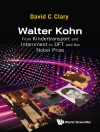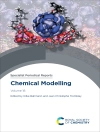Chemical Modelling: Applications and Theory comprises critical literature reviews of all aspects of molecular modelling. Molecular modelling in this context refers to modelliing the structure, properties and reactions of atoms, molecules and materials. Each chapter provides a selective review of recent literature, incorporating sufficient historical perspective for the non-specialist to gain an understanding. With chemical modelling covering such a wide range of subjects, this Specialist Periodical Report serves as the first port of call to any chemist, biochemist, materials scientist or molecular physicist needing to acquaint themselves with major developments in the area.
表中的内容
Preface; Modelling Photochemical Pharmaceutics and Photodegrading; Proton transport; Polarizabilities and hyperpolarizabilities; Numerical Methods in Chemistry; Elongation method; Quantum Monte Carlo Methods; Neural Networks; Protein Folding; Mechanically Induced Chemistry: First-Principles Simulation; Nanoelectronics; Orbital Dependent Exact Exchange Methods in Denisty Functional Theory; Computer-Aided Drug Design
关于作者
Prof. Dr. Michael Springborg heads up of the three groups in Physical Chemistry at the University of Saarland where the main activities concentrate on teaching and research. The major part of Prof. Dr. Michael Springborg’s research concentrates on the development and application of theoretical methods, including accompanying computer programs, for the determination of materials properties. Quantum theory forms the theoretical foundation for most of our work. The materials of the group’s interest range from atoms, via clusters and polymers, to solids. They study their structural, electronic, energetic, and opitcal properties.











